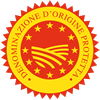Description
The Mâconnais PDO is a fine-dough cheese obtained by raw and whole goat's milk.
Production Area
The production area of Mâconnais PDO covers some municipal areas in the departments of Rhône and Saône-et-Loire, in French region Rhône-Alpes.
Production Method
Any milk treatment is forbidden, except of heating (maximum 25°C) and whey filtering processes in order to eliminate possible impurities. Plus, the removal of the water part from milk to favour its concentration is not allowed. During the preparation, the only allowed ingredients are rennet, harmless bacterial cultures, yeasts, moulds and salt. The first processing phase includes the addition of rennet which has to take place at a temperature between 18 and 25°C, within well-established times, depending on the process which can be made in farms or in diary factories. The dough coagulation requires about 18-24 hours from the addition of rennet. The dough is put in moulds by hand and is left to drain in standard sized moulds. Then there are the salting and seasoning phases (about 10 days). At this point, the moulds of Mâconnais PDO can be stored in freeze rooms before being sold on the market.
Appearance and Flavour
Mâconnais PDO distinctive features are its small sizes, its trunk-conic shape and its homogeneous, creamy and smooth, fine white dough. The less seasoned cheese has a beige-ivory external colour, whilst in the most seasoned it is bluish. Plus, Mâconnais PDO is famous for its tasty flavour.
History
The origins of Mâconnais PDO are a part of the history of its production land. Indeed, this cheese started to be produced in the Rhône-Alpes, a ground rich in vineyards, by the wives of vine dressers. As these women also worked in the vineyard, they had only a few times to produce cheeses. Therefore, there was the need to produce small sized cheeses which did not need any specific manual processes. In fact, still today Mâconnais PDO cheeses are not turned while they are in moulds, where they are put after seasoning. Despite the many attempts to root up the goats from Mâconnais region, as this animal was considered harmful for the rural local economy, today the Mâconnais PDO has a very good popularity. Indeed, thanks to the extra-regional trade circuits which have been ready for a lot of time for the sale of local wines, the reputation of Mâconnais PDO cheese is growing constantly. Plus the product is mentioned in some of the most important books dedicated to dairy products. For example, the mention in a British book from 1885 is famous.
Gastronomy
Mâconnais PDO has to be stored in a fresh and dry room and, due to its small size; it is often eaten in only a meal. It can be served laying in a cup and accompanied with cream. Due to its tasty dough, Mâconnais PDO is very good combined with local white wines.
Marketing
The product is sold as Mâconnais PDO. It can be sold raw or seasoned. It has to be packed in moulds with a weight between 50 and 65 gr, and completed by the suitable label. In case of long seasoning, the product has not to weigh less than 30 gr.
Distinctive Features
The seasoning phase of Mâconnais PDO consists traditionally in an actual drying process, a kind of cage, called chazère, suspended from house arcades and protected from rodents and insects.





